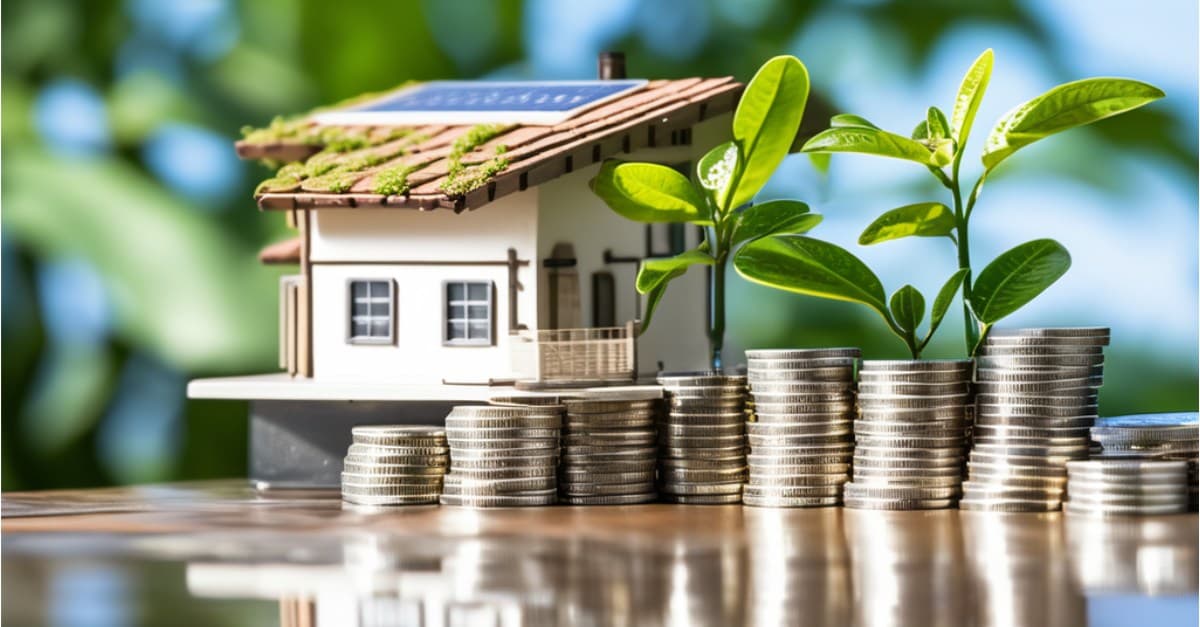23 ways to reduce your energy bill before buying solar panels
There are a number of ways you can lower your energy bill before taking the big leap into buying solar panels for your home

Saakshi Gupta
Feb 16, 2024

Australia has some of the highest electricity prices in the world. Australian households faced an increase of up to 25% in electricity prices since July 2023. So, like many, you might also be looking for ways to cut down your energy bills.
One of the best ways is to install solar panels and generate enough renewable energy to not spend on power from energy retailers.
But, before you buy solar panels for your home, there are many practical ways in which you can reduce your energy bill. In this article, I’ll give you some tips on how to cut your energy bill down significantly before you upgrade to solar.
Be aware of your energy usage habits
Switch your energy plan or retailer to one with better rates and discounts
Seal your home to prevent air leaking
Insulate your home to reduce spend on heating and cooling
Don’t forget to insulate your roof and attic
Seal fireplace dampers to maintain a comfortable temperature
Make use of curtains and blinds
Double-glaze the windows
Install a smart thermostat
Buy energy-efficient appliances to reduce energy usage
Unplug electronics that aren’t in use
Use power strips to shut off power to appliances on standby
Install water-efficient appliances and fixtures to reduce the amount of hot water used
Regularly clean filters in appliances for better performance
Use motion sensor lights in low-traffic areas
Seal ductwork to improve performance
Install a reflective roof to prevent heat absorption
Set fridge and freezer to optimal temperature
Wash and dry your clothes efficiently
Cook using energy-efficient cooktops and habits
Install an electric heat pump
Get energy-efficient pool equipment
Plant trees to keep the outside of your home cool
23 ways to lower your energy bills
1. Monitor your energy usage
Monitoring your energy usage habits is one of the most important steps towards reducing your energy bill. This can help you find if there are any energy-hungry appliances in your home and when your household is consuming the most energy.
SolvingZero can help you monitor your energy consumption without installing a device or us having to visit your home!
2. Make the energy plan switch
Understanding energy plans can be daunting. This can lead to consumers sticking with the same energy provider or energy plan even when you're being charged double what you should be paying!
Regularly shopping around for cheap electricity plans can keep you updated with the discounts available and get you the best prices. You can even call your current retailer to inquire about discounts and plans that suit your energy usage better.
Many energy providers will roll you onto more expensive plans after your original plan expires, so be careful and shop around!
3. Air seal your home
Air sealing involves caulking and weatherstripping your doors and windows to reduce the amount of air leaking in and out of your home. It can cut cooling and heating costs and lower your electricity bill.
4. Insulate your walls
Poorly insulated walls could cause about 15% to 25% heat loss in the winter and heat gains in the summer says studies conducted by the federal goverment, making it difficult to maintain a comfortable temperature in your home.
Installing insulation could help you spend less on heating and cooling your home. Insulation materials include polyester, fibreglass, glass wool, natural wool, and more. You could reduce energy costs by up to 40% by fully insulating your home with quality insulation.
5. Insulate the roofs and attic
Don’t forget your roofs and attic when improving home insulation, as 25% to 30% heat loss or gain happens through the ceiling and roof.
This can result in your central heating system working overtime and significantly raising your energy bills. Well-insulated roofs and attics create a thermal barrier that can keep your home cooler in summer and warmer in winter.
6. Seal old fireplaces
Even when your home is perfectly insulated, if your fireplace damper is unsealed or open, it can cause heat loss. You can find affordable fireplace sealers on the internet for around $60. it will probably pay for itself in a year!
So, tightly seal the fireplace dampers to reduce the cost spent on maintaining a comfortable temperature at home.
7. Shut the doors and make use of curtains and blinds
Use curtains and blinds to block your windows during summer days to keep the sun out. You can also consider installing external blinds or awnings to help cool down the house without aircon. If you notice draughts, you can seal the edges of your door with foam or rubber strips.
8. Consider energy-efficient windows
Continuing with the tips for reducing heating and cooling costs, consider upgrading to double-glazed windows. If you already have single-glazed windows installed, you can consider secondary glazing — that is, they can be retrofitted with an extra pane of clear acrylic or glass. Insulation against external noise will come as a bonus.
9. Opt for a smart or programmable thermostat
You can control smart thermostats remotely and set up a schedule of ideal temperatures throughout the day, depending on your daily routine. For instance, you can decrease your energy consumption and reduce your bills by adjusting the temperatures when your home is unoccupied. Some smart thermostats might also provide insights into your energy usage data and recommend temperatures that offer comfort and cost savings.
10. Choose energy-efficient appliances and HVAC systems
Appliances make up a significant amount of home energy use, so it’s best to opt for energy-efficient ones that don’t increase your energy bills. Check the energy ratings of appliances like washing machines, televisions, fridges, freezers, dishwashers, and others, to see how efficient they are. You might also find gas rating labels on some gas appliances like gas space heaters, gas water heaters and ducted heating systems.
11. Unplug electronics when not in use
A standard, yet often unpracticed, recommendation to cut energy costs is to unplug the electronics that aren’t in use. Some plugged-in appliances keep using energy even when they’re not in use or powered off, driving up your electric bills. Unplugging is an easy way to save up to 20% of your power usage.
12. Use smart power strips
You can look into buying a smart power strip that detects when a device is on standby and cuts off its power, saving you the trouble of constantly plugging and unplugging.
13. Install water-efficient products
Hot water consumes energy, and inefficient appliances and fixtures can quickly increase your energy bills. Look for the Water Efficiency Labelling and Standards (WELS) label on appliances for a star rating on how water-efficient different products are. These labels also tell you the rate of a product’s water consumption.
Also, consider more efficient dishwashers, sink taps, and shower heads. Water-efficient products could give you estimated energy savings of up to 65% for water heating due to reduced electricity and gas usage to heat the water.
14. Clean or replace air filters regularly
Dirty air filters can make your air conditioner work harder to get the air flowing and, in turn, use more energy. So, it’s best to clean the filters regularly to ensure that the aircon is running efficiently. Appliances such as dryers, dishwashers, vacuums and others can also similarly benefit from a regular clean-up of filters.
15. Use timers or motion sensors for lighting
In rooms or areas that don’t see regular traffic, consider installing lights with motion sensors or timers for convenience and to ensure they’re only used when necessary.
16. Seal ductwork
Ducts with leaks can reduce the efficiency of heating and cooling systems by 20%. Sealing the ducts will not only improve their performance but also bring you energy savings.
17. Install a reflective or cool roof
Unlike other roofing systems, a reflective roof does not absorb sunlight and heat. This will keep your home cool in the summer, reducing or eliminating the need for air conditioning.
18. Be smart about how you wash and dry your clothes
You can reduce the number of times you run the washing machine by waiting until you have a full load of clothes to wash. Choosing a cold water cycle can also save you money.
Clothes dryers are known to use a significant amount of energy. Whenever possible, hang your clothes out to dry or dry them indoors under a fan.
19. Optimise refrigerator and freezer
You can maximise your refrigerator’s efficiency by setting the optimal temperatures. You should aim for 3°C for the fridge and -18 °C for the freezer to decrease energy usage and bills.
20. Cook efficiently
Along with optimising your refrigerator, you can also reduce your energy usage and bills by being smart about how you cook in the kitchen. For instance, consider getting an induction cooktop over its gas alternatives. Induction cooktops are three times more efficient than gas stoves and are known to cook food faster.
You can also try implementing some other cooking habits, like keeping the lids on pots and pans when cooking on a stove to reduce cooking time, and using a microwave instead of an electric oven to consume less energy whenever possible.
21. Go for an electric heat pump
A Heat pump is an energy-efficient and cost-effective option to heat your home. Heat pumps gather heat from an external source, amplify it and then transfer it to where it’s needed. Some heat pumps can even cool your home in the summer. International Energy Agency, heat pumps are 3 to 5 times more energy efficient than gas boilers.
22. Upgrade to energy-efficient pool equipment
If you have a pool, you can go for an energy-efficient pool pump that allows for different speeds depending on the different pool functions. Additionally, it’s important to choose pool pumps and heaters that suit your pool's size and depth appropriately. Install a pool cover to keep the heat and water trapped.
23. Cool down your home’s external environment
Planting trees and installing lawns outside your home can bring shade and reduce the heat reflecting off of decks and walls. Keeping the outside of your home cool will also cool your house down during the warmer months.
Install solar panels
Finally, installing a solar PV system can be the way for many to cut down electricity costs significantly. Solar panels will allow you to generate renewable energy within your home, reducing your dependency on grid energy. And if you generate more energy than can be consumed by your household, you can sell it back to the grid and earn those feed-in-tariff credits!
The amount of electricity a solar PV system generates will depend on various factors such as its size, orientation, weather conditions, and more. Make sure you are making the right decisions when you install solar, if you ever have any doubts we have a solar calculator that will help you figure this all out automatically, the calculator is based on your home and your actual energy consumption patterns. Head over to our app to try it out.
